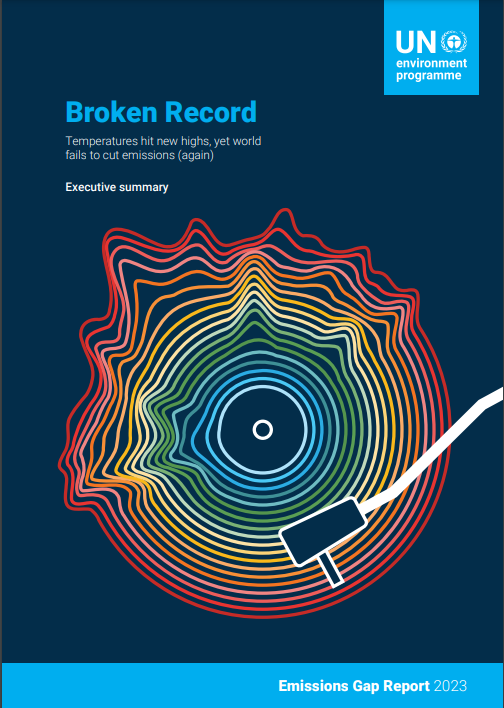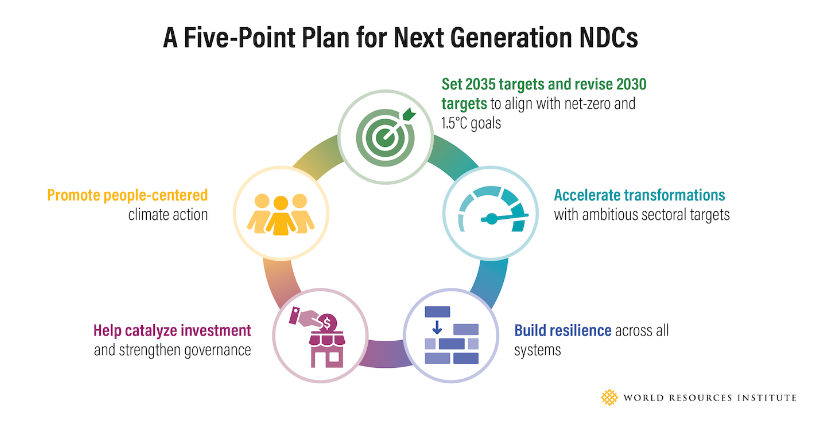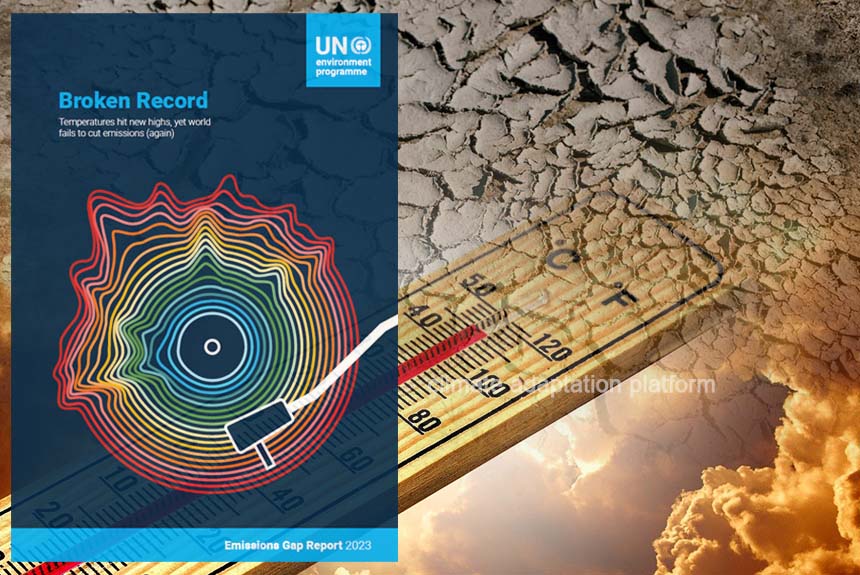The record-breaking heatwaves, floods, and wildfires of 2023 have underscored the devastating impacts of global warming, pushing nations to confront the harsh reality: we are running out of time.
The effects of climate change are unmistakeably present globally, indicating an ongoing crisis and a lack of sufficient climate actions such as reducing GHG emissions and implementing climate adaptation strategies.
All the authoritative and official agencies monitoring the Earth’s climate, weather, and space environment – Copernicus, WMO, NOAA, and NASA- confirmed that 2023 was the warmest year on record.
The year has also seen severe flooding in Brazil and East Africa, droughts in Mexico and Europe, and wildfires in Canada. Record-breaking heat has claimed lives worldwide (Overholt et al., 2024).
In 2025, countries will again submit their Nationally Determined Contributions (NDCs), crucial plans detailing their intended climate actions through 2035. These plans aim to slash GHG emissions to help limit global warming, and they are significant in the fight against climate change. As agreed in the Paris Agreement, efforts are being made to limit warming to 1.5°C. The upcoming NDC submissions are critical, as they should reflect countries’ most ambitious commitments.
The WRI article highlights the importance of NDCs and how they are the countries’ primary “vehicle” to collectively address climate by setting concrete targets and measures that they must work to achieve within the next ten years. It notes that most countries have submitted their initial emissions targets before committing to the Paris Agreement.
As of June 2024, most have put forth new or updated NDCs with 2023 targets, but only some reflected increased ambitions. The next round of NDCs is due in early 2025, and it will show countries’ climate ambitions up to 2035.
Current countries’ climate commitments need to be revised to address climate change
The United Nations Environment Programme (UNEP) Emissions Gap Report 2023, aptly titled “Broken Record”, presents a sombre picture of the world’s failure yet again to cut emissions. Instead of declining, global GHG emissions and atmospheric concentrations of carbon dioxide (CO2) set new records in 2022.

As things stand, fully implementing unconditional Nationally Determined Contributions (NDCs) made under the Paris Agreement would put the world on track for limiting temperature rise to 2.9°C above pre-industrial levels this century. Fully implementing conditional NDCs would lower this to 2.5°C.
The 14th edition report provides an annual, independent, science-based assessment of the gap between the pledged greenhouse gas (GHG) emissions reductions and the reductions required to align with the Paris Agreement’s long-term temperature goal.
According to the report, to be on track with the Paris Agreement temperature limit, 2030 greenhouse gas emissions must fall by 28% to achieve the 2°C pathway and 42% to achieve the 1.5°C pathway.
The key findings of the report include:
- Global GHG emissions set a record of 57.4 GtCO2e in 2022.
- Current and historical emissions are highly unequally distributed within and among countries, reflecting global patterns of inequality. 10% of the population with the highest income accounted for nearly half (48%) of emissions. The bottom 50% of the world population contributed only 12% of total emissions.
- There has been negligible movement on NDCs since COP27, but there has been some progress in NDCs and policies since the Paris Agreement was adopted.
- The number of net-zero pledges continues to increase, but confidence in their implementation still needs to improve.
- The emissions gap in 2030 remains high: current unconditional NDCs imply a 14 GtCO2e gap for a 2°C goal and a 22 GtCO2e gap for the 1.5°C goal. The additional implementation of the conditional NDCs reduces these estimates by 3 GtCO2e.
- Action in this decade will determine the ambition required in the next round of NDCs for 2035 and the feasibility of achieving the long-term temperature goal of the Paris Agreement.
- If current policies are continued, global warming is estimated to be limited to 3°C. Delivering on all unconditional and conditional pledges by 2030 lowers this estimate to 2.5°C, with the additional fulfilment of all net-zero pledges bringing it to 2°C.
- The failure to stringently reduce emissions in high-income countries and to prevent further emissions growth in low- and middle-income countries implies that all countries must urgently accelerate economy-wide, low-carbon transformations to achieve the long-term temperature goal of the Paris Agreement.
- Low- and middle-income countries face substantial economic and institutional challenges in low-carbon energy transitions but can also exploit opportunities.
- Further delay of stringent global GHG emissions reductions will increase future reliance on CDR to meet the long-term temperature goal of the Paris Agreement.
As countries prepare to submit their updated NDCs in 2025, showing their climate ambitions leading to 2035, it will allow them to close the emissions and climate action gaps that the latest UNEP Emissions Gap report reveals.
The WRI article presents five urgent priorities on what countries should include in their 2025 NDCs.

The five-point plan highlights the following actions countries must take to align with the Paris Agreement temperature goals:
- First, developed countries and high-emitting countries must take the lead on rapidly reducing remissions.
- Second, climate adaptation actions and implementation should be strengthened.
- Third, more actions should be taken to lower emissions in key sectors like energy and food systems.
- Fourth, setting goals is one thing, but the government must also develop policies to stimulate investments in climate action.
- Lastly, focus on people and communities by transitioning to a zero-carbon and climate-resilient economy to reduce pollution, generate jobs and improve human and environmental health.
The stakes have never been higher. As countries prepare their 2025 NDCs, the window for preventing catastrophic climate change is rapidly closing. The UNEP’s sobering findings make it clear: incremental action is no longer enough.
It’s time for bold, transformative commitments that prioritise people, the planet, and a future free from the worst impacts of climate change. If nations fail to act now, the consequences will be felt for generations to come—but if they seize this moment, they could reshape the future for the better. The question is, will they?
Source:
Copernicus: 2023 is the hottest year on record, with global temperatures close to the 1.5°C limit. (2024, January 9). Retrieved from https://climate.copernicus.eu/copernicus-2023-hottest-year-record
NASA Analysis Confirms 2023 as Warmest Year on Record. (2024, January 12). NASA. Retrieved from https://www.nasa.gov/news-release/nasa-analysis-confirms-2023-as-warmest-year-on-record/
Overholt, M., Gerholdt, R., Srouji, J., & Alayza, M. (2024, August 5). What Are Nationally Determined Contributions (NDCs) and Why Are They Important? World Resources Institute. Retrieved from https://www.wri.org/insights/nationally-determined-contributions-ndcs-explained
Emissions Gap Report 2023. (2023 November 20). UNEP. Retrieved from https://www.unep.org/resources/emissions-gap-report-2023



Leave a Reply